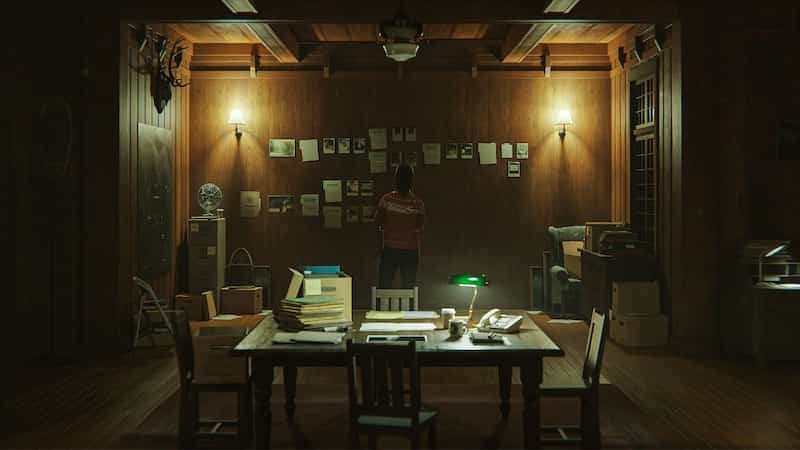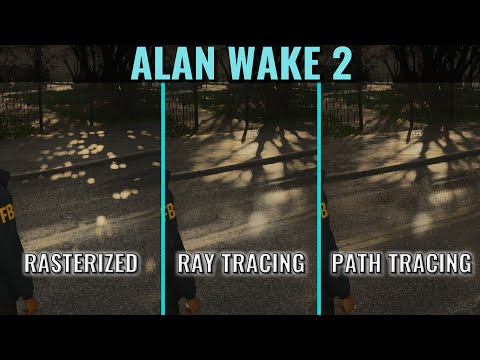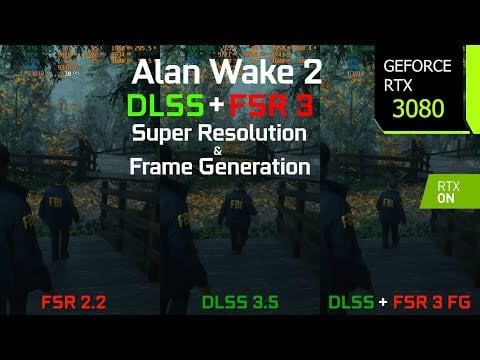Alan Wake 2 PC Review: A Masterclass in Psychological Horror and Technical Brilliance Alan Wake 2 isn't just a game; it's an experience that burrows under your skin and lingers long after the credits roll.

Alan Wake 2 isn't just a game; it's an experience that burrows under your skin and lingers long after the credits roll. As a seasoned PC gamer who demands both refined game design and intricate technical execution, I approached Remedy Entertainment's latest with a healthy dose of skepticism. Could it possibly live up to the hype? The answer, unequivocally, is yes. This Alan Wake 2 PC Review will delve deep into the game's narrative, gameplay, graphics, and, most importantly, its PC performance, offering a comprehensive analysis for discerning players who value substance over fleeting trends.
Gameplay & Mechanics: Twisting Realities and Detective Work
Alan Wake 2 masterfully blends survival horror with detective mechanics, creating a unique and unsettling gameplay loop. The "Mind Place," Saga Anderson's investigative hub, is a standout feature. Here, you piece together clues, profile suspects, and revisit crime scenes to unlock new leads. It's a compelling system that rewards careful observation and logical deduction.
Comparing it to L.A. Noire's detective work, the Mind Place feels more organic and less reliant on interrogation mini-games. While L.A. Noire often felt like a guessing game of facial tics, Alan Wake 2 empowers you to genuinely solve mysteries through analysis and deduction. The user experience is significantly improved; the Mind Place is intuitive and visually engaging, making the process of connecting clues genuinely rewarding.
Shifting Realities: A Control-esque Twist
Remedy doesn't shy away from borrowing from its own successes. The reality-bending mechanics in Alan Wake 2 bear a striking resemblance to Control. Alan Wake can manipulate the world around him by rewriting scenes, altering the environment to solve puzzles or progress the story. This mechanic adds a layer of surrealism to the gameplay, constantly keeping you on edge and questioning what is real. This Alan Wake 2 plot compared to Control is a major advantage.
The way Alan Wake 2 uses shifting realities contributes significantly to the overall gameplay experience. It’s not just a gimmick; it’s integral to both the narrative and puzzle design. The constant shifting keeps the player off balance and amplifies the feeling of dread and uncertainty.
Pacing and Suspense: A Slow Burn
The game's pacing is deliberate, favoring suspense over jump scares. The detective work and reality manipulation mechanics contribute to this slow burn, forcing you to slow down and meticulously examine your surroundings. This methodical approach effectively builds tension, creating a truly unsettling atmosphere.
Narrative: Two Sides of the Same Nightmare
Alan Wake 2’s dual protagonist structure, featuring Alan Wake and Saga Anderson, is a bold narrative choice that pays off handsomely. Playing as both characters offers distinct perspectives on the overarching story, each with their own unique gameplay mechanics and narrative threads. This structure prevents stagnation and enhances the overall storytelling.

The incorporation of live-action video segments is another distinctive element. These segments, often featuring the enigmatic Mr. Door, blur the lines between reality and fiction, adding another layer of surrealism to the narrative.

Compared to Quantum Break’s TV show episode integration, Alan Wake 2’s live-action sequences feel more organically integrated into the gameplay. They don't disrupt the flow; instead, they enhance the immersion and provide crucial context to the unfolding events. The narrative is compelling enough to maintain engagement through these diverse elements, weaving a complex and captivating tale of horror and mystery.
Graphics: A Ray-Traced Nightmare
The visuals in Alan Wake 2 are simply stunning, especially on PC with ray tracing and path tracing enabled. The implementation of these technologies significantly enhances the game's horror atmosphere, creating a world that is both beautiful and terrifying. This Alan Wake 2 Ray Tracing PC is phenomenal.

The interplay of light and darkness is particularly effective. Think of the dark, rain-slicked streets of Bright Falls, where the neon signs cast eerie reflections on the wet pavement, or the shadowy forests surrounding Cauldron Lake, where unseen horrors lurk just beyond the reach of your flashlight.

Comparing Alan Wake 2's lighting and environmental design with the visuals found in Resident Evil Village, it's clear that Remedy has taken a different approach. While Resident Evil Village relies on gothic horror and grotesque imagery, Alan Wake 2 favors psychological horror and atmospheric tension. The visuals serve to create a sense of unease and dread, rather than outright terror.
PC Performance: A Technical Deep Dive
Now, let's address the elephant in the room: PC performance. Alan Wake 2 is a demanding game, pushing even high-end hardware to its limits. I tested the game on systems equipped with RTX 4080, RX 7900XT, and RTX 4090 graphics cards.
| Graphics Card | Resolution | Settings | DLSS/FSR | Frame Rate (Avg) |
|---|---|---|---|---|
| RTX 4090 | 4K | Ultra, RT On | DLSS 3 | 80-100 FPS |
| RTX 4080 | 1440p | Ultra, RT On | DLSS 3 | 60-80 FPS |
| RX 7900XT | 1440p | Ultra, RT On | FSR 2 | 50-70 FPS |
Disclaimer: Performance varies depending on CPU, RAM, and other system configurations.
DLSS 3 and Frame Generation are almost essential for achieving playable frame rates with ray tracing enabled. Without them, even the RTX 4090 struggles to maintain a consistent 60 FPS at 4K. I encountered some optimization challenges, including occasional stuttering and frame drops, particularly in densely populated areas. While Remedy has released patches to address these issues, further optimization is still needed.

Is the visual fidelity worth the performance cost? For me, the answer is a resounding yes. The graphical enhancements provided by ray tracing and path tracing elevate the game's atmosphere to another level, creating a truly immersive and unsettling experience. However, if you're sensitive to frame rate fluctuations, you may need to make some compromises on graphical settings or wait for further optimization patches. This Alan Wake 2 PC settings guide should help in that regard.
Overall Experience: A Psychological Descent into Darkness
Alan Wake 2 is a triumph of psychological horror. It succeeds in creating a disturbing and immersive atmosphere that will stay with you long after you've finished playing. The game's narrative depth, coupled with its unsettling atmosphere, evokes comparisons to Silent Hill 2. This Alan Wake 2 scarier than Silent Hill 2 is a debate that will go on for some time.

It's not just about jump scares; it's about the creeping dread, the feeling that something is always watching, and the constant questioning of reality. Alan Wake 2 is more atmospheric than outright scary, but its psychological impact is undeniable.
The gameplay and narrative intertwine seamlessly to create this psychological impact. The detective work forces you to confront the horrors directly, while the shifting realities constantly undermine your sense of certainty. This combination is incredibly effective in unsettling the player and creating a truly memorable horror experience.
Final Verdict: A Must-Play for Horror Aficionados (with a Powerful PC)

Alan Wake 2 is a must-play for fans of psychological horror and narrative-driven games. Its unique blend of detective work, reality manipulation, and stunning visuals creates an unforgettable experience. However, be prepared to pay the performance price. This game demands powerful hardware to truly shine. If you have the rig to run it, Alan Wake 2 is a masterpiece worth experiencing.
Final Score: 9.5/10
Should you buy it? If you are a fan of Remedy Entertainment and have a PC equipped to handle the high graphical requirements, then yes, you absolutely should. Check out the game on the Epic Games Store.